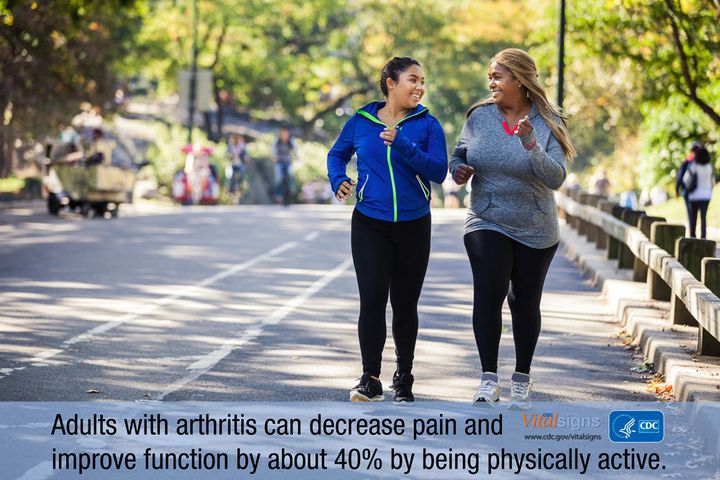
For the millions of U.S. adults with arthritis, performing even small, everyday activities – holding a cup of coffee, lugging a bag of groceries, walking up or down stairs – can be extremely painful.
So it’s probably no surprise that some limit or avoid activity. When you’re physically hurting, the last thing you want to do is exercise. Unfortunately, that inactivity can cause more harm than good.
CDC’s latest Vital Signs report reveals physical activity can both decrease pain and improve physical function in people with arthritis by almost 40 percent. It can also reduce healthcare costs. And with record numbers of Americans reporting a diagnosis of arthritis – a number that’s only expected to increase as the population grows and ages – it’s important to learn how to safely manage this growing and debilitating health threat.
According to our findings, more than 54 million US adults, or about 1 in 4, have arthritis – a condition that can result in pain, aching, stiffness and swelling of the joints. That’s an all-time high. And it’s not just elderly adults; a majority are working age, between 18 and 64-years-old. Moreover, the percentage of adults limited by arthritis continues to get worse and has increased by about 20 percent since 2002.
About 24 million Americans report that arthritis has significantly impacted their quality of life – and not just in terms of physical limitations. For example, we know that one-third of adults with arthritis over age 45 report anxiety or depression. Arthritis also makes it harder to manage chronic diseases – such as heart disease, diabetes or obesity – by limiting physical activity.
The good news is, physical activity can improve overall health and manage these conditions. The bad news is, our research reveals that 1 in 3 adults with arthritis are inactive. While it may seem counterintuitive, physical activity is proven to reduce pain, improve joint function and delay disability among people with arthritis.
You don’t have to kickbox or enroll in a high-impact, boot camp course at your local gym. Walking, biking or swimming – even for 10 minutes at a time – can reduce pain and improve function. There are several physical activity options, as well as disease management education programs, available in parks, recreation centers and community-based organizations across the nation.
I understand how frustrating and debilitating it can be for everyday actions to cause pain and discomfort. However, exercise is proven to be one of the best things you can do for arthritis, even when it’s the last thing you want to do. Arthritis costs the U.S. at least $81 billion a year in direct medical costs. There are 1 million total hip and knee replacements each year, most aimed at improving arthritis-related pain and function.
Work with your doctors and loved ones to adopt actions aimed at reducing arthritis-related pain, fatigue, anxiety and depression. Even small steps – such as a short walk in the park or a lap in the pool – can make a big difference in your quality of life.
